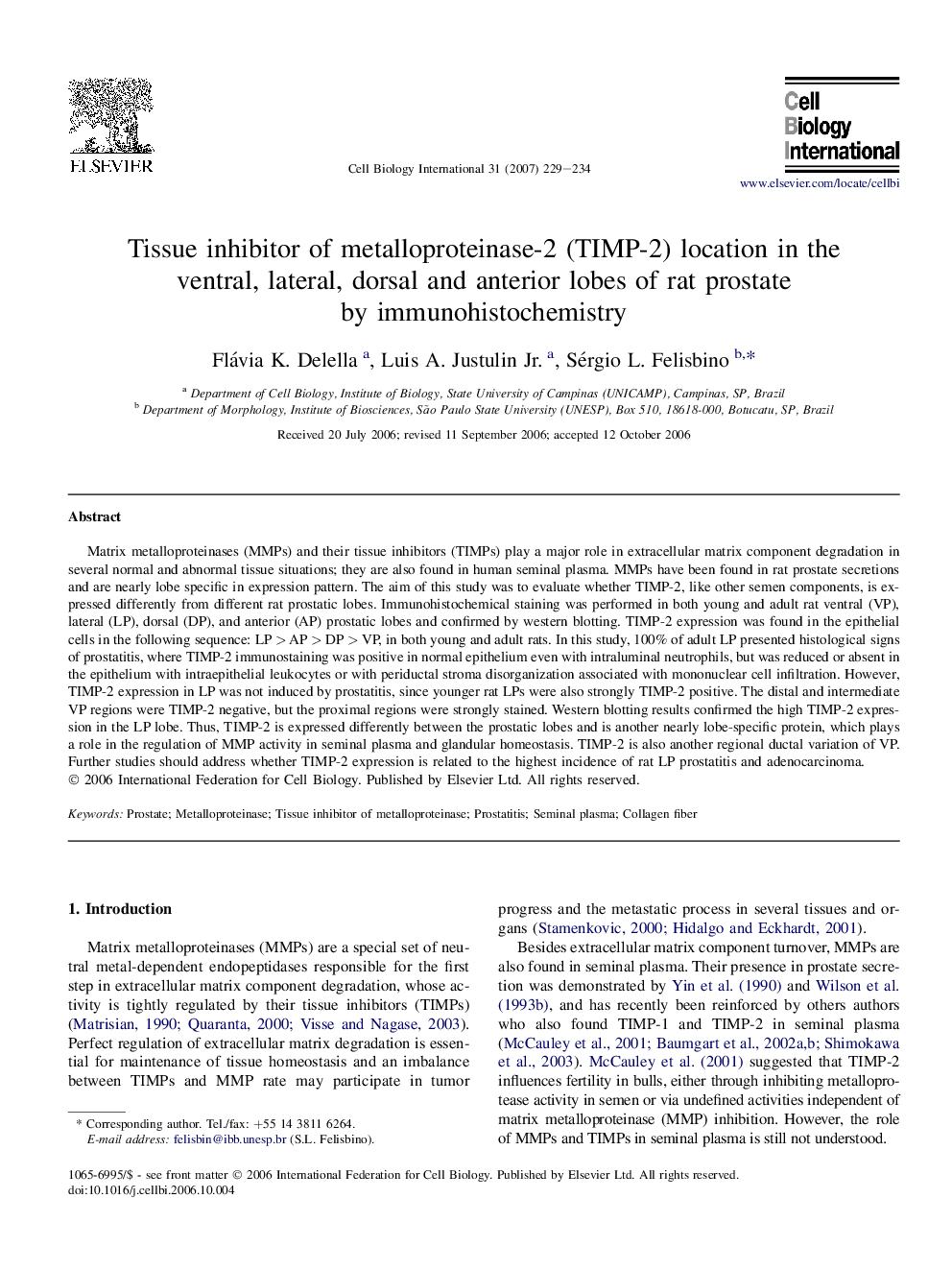| Article ID | Journal | Published Year | Pages | File Type |
|---|---|---|---|---|
| 2067803 | Cell Biology International | 2007 | 6 Pages |
Abstract
Matrix metalloproteinases (MMPs) and their tissue inhibitors (TIMPs) play a major role in extracellular matrix component degradation in several normal and abnormal tissue situations; they are also found in human seminal plasma. MMPs have been found in rat prostate secretions and are nearly lobe specific in expression pattern. The aim of this study was to evaluate whether TIMP-2, like other semen components, is expressed differently from different rat prostatic lobes. Immunohistochemical staining was performed in both young and adult rat ventral (VP), lateral (LP), dorsal (DP), and anterior (AP) prostatic lobes and confirmed by western blotting. TIMP-2 expression was found in the epithelial cells in the following sequence: LPÂ >Â APÂ >Â DPÂ >Â VP, in both young and adult rats. In this study, 100% of adult LP presented histological signs of prostatitis, where TIMP-2 immunostaining was positive in normal epithelium even with intraluminal neutrophils, but was reduced or absent in the epithelium with intraepithelial leukocytes or with periductal stroma disorganization associated with mononuclear cell infiltration. However, TIMP-2 expression in LP was not induced by prostatitis, since younger rat LPs were also strongly TIMP-2 positive. The distal and intermediate VP regions were TIMP-2 negative, but the proximal regions were strongly stained. Western blotting results confirmed the high TIMP-2 expression in the LP lobe. Thus, TIMP-2 is expressed differently between the prostatic lobes and is another nearly lobe-specific protein, which plays a role in the regulation of MMP activity in seminal plasma and glandular homeostasis. TIMP-2 is also another regional ductal variation of VP. Further studies should address whether TIMP-2 expression is related to the highest incidence of rat LP prostatitis and adenocarcinoma.
Keywords
Related Topics
Life Sciences
Biochemistry, Genetics and Molecular Biology
Biophysics
Authors
Flávia K. Delella, Luis A. Jr., Sérgio L. Felisbino,
